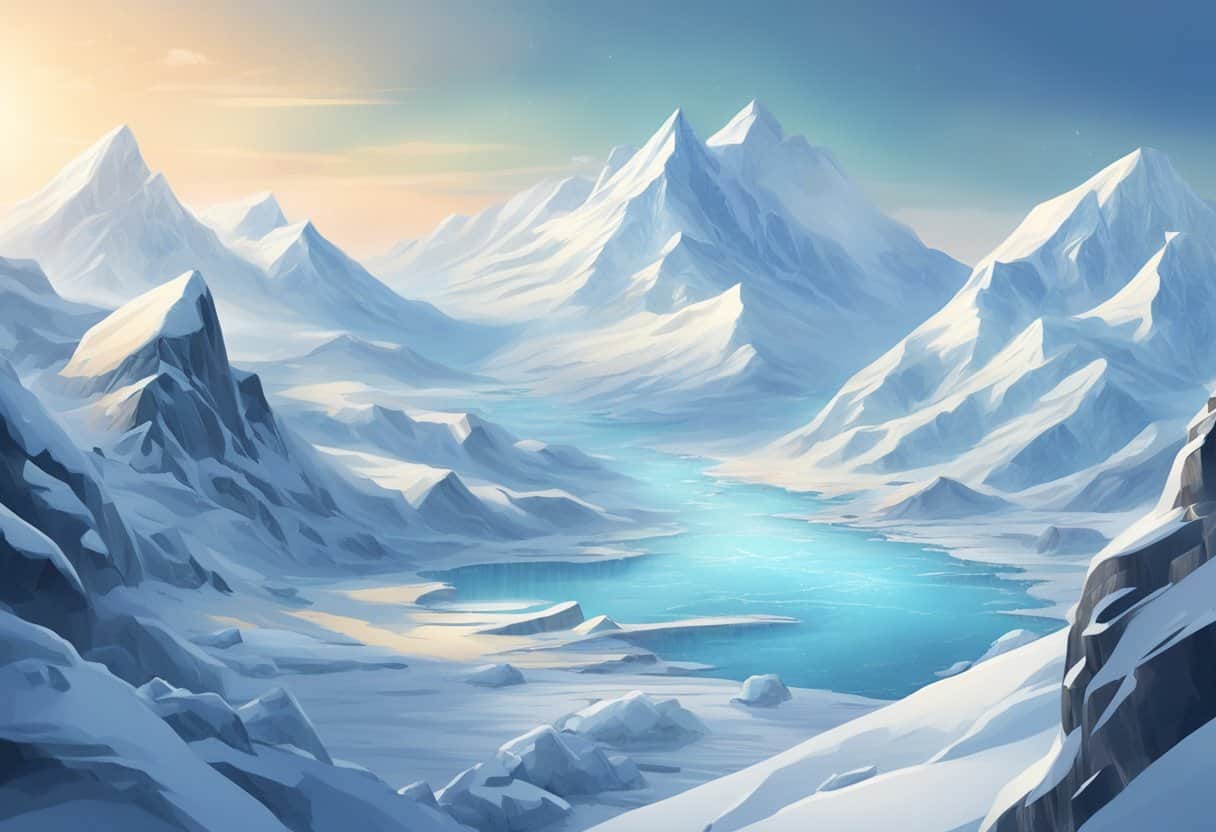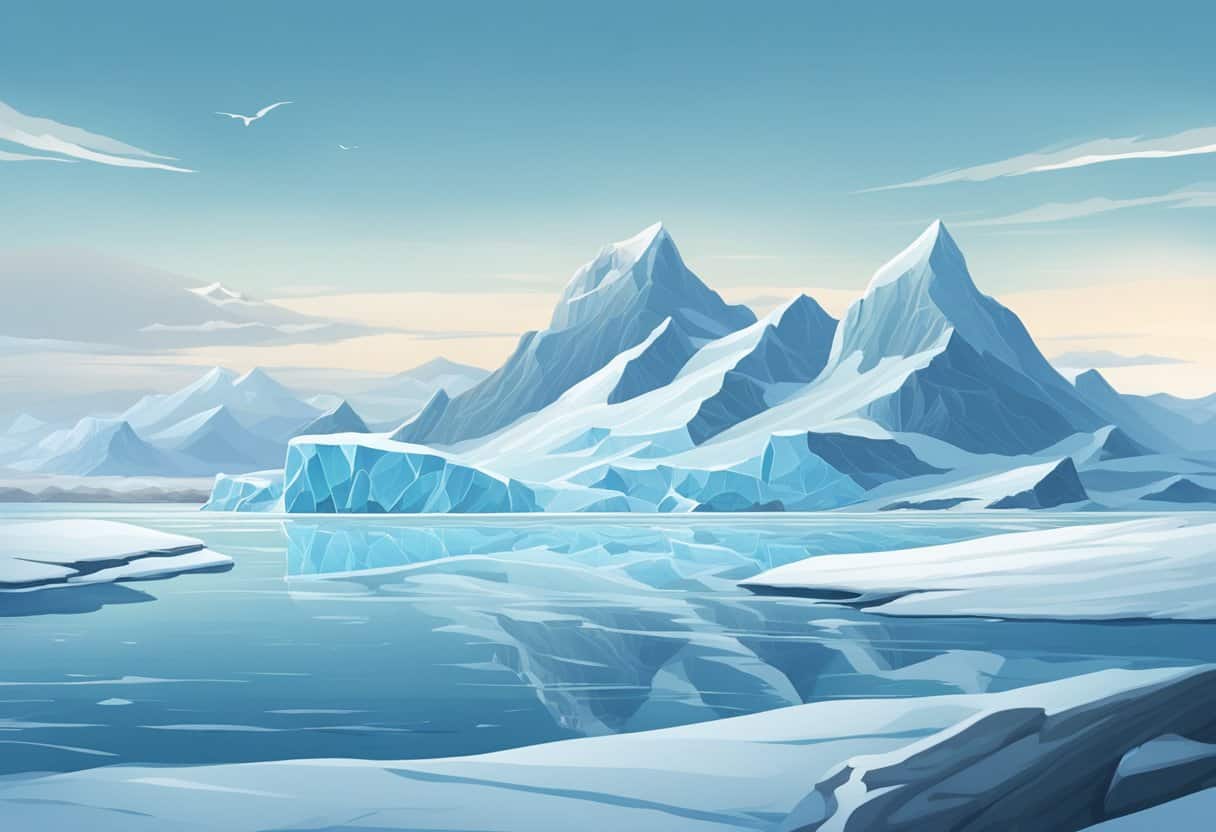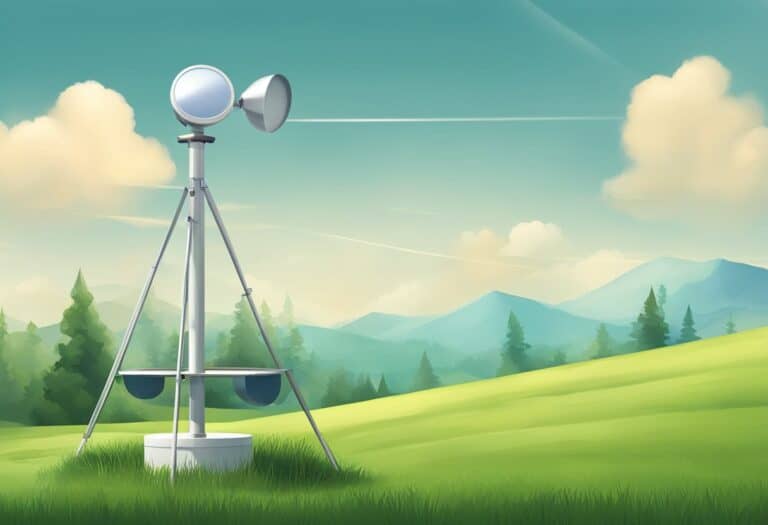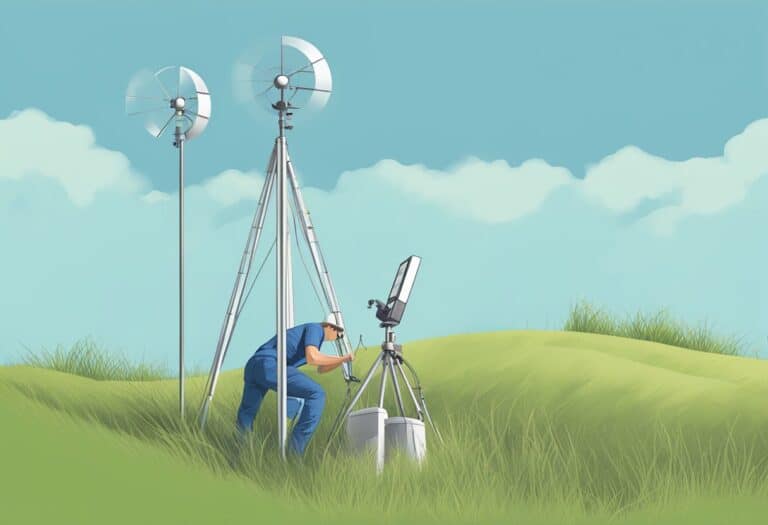Living in the coldest places on Earth is a unique experience that requires resilience and adaptation.
These regions, often reaching extreme temperatures well below zero, challenge human survival and have fostered unique ways of life. With average temperatures that can plummet in inhospitable ranges, the communities residing in these areas are examples of human tenacity. Inhabited places like Oymyakon, Siberia, known for its record-breaking cold temperatures, showcase that life can persist even in the most frigid climates.
Understanding these extreme weather patterns does more than just highlight the record-breaking cold; it provides insights into the Earth’s climate system. Scientific and geographical analyses of these cold environments help us grasp how these areas influence weather patterns and global understanding.
Researchers also study how flora and fauna have adapted to such harsh conditions, offering lessons in resilience and survival.
Living in Earth’s coldest regions demands resilience, where temperatures plunge below zero, challenging survival. Inhabitants of places like Oymyakon, Siberia, adapt to these harsh conditions, showcasing human tenacity. Scientific study of these extreme climates provides valuable insights into Earth’s climate system, emphasizing the remarkable adaptation of life in frigid temperatures.
Extreme Weather Patterns and Records
Extreme weather is not uncommon in regions notorious for their frigid climates, like Siberia and parts of North America. Here, you’ll discover some of the most chilling temperature records and how people have adapted to live in these frostbitten locations.
Notable Temperature Records
- Oymyakon, Russia: Often recognized as one of the coldest permanently inhabited locales on Earth, with temperatures plunging as low as -67.7°C (-89.9°F).
- Verkhoyansk, Russia: Competes closely with Oymyakon for cold records, having documented lows reaching -67.8°C (-90°F), emphasizing the severe cold snaps of Siberia.
- North America: Utqiagvik (formerly Barrow), Alaska, and the Yukon Territory endure sub-zero extremes, with records showing temperatures down to -47°C (-52.6°F) in Alaska.
Records of these spine-chilling extremities are not just figures but a testament to the sheer extremeness these locations present.
Coldest Inhabitants and Cities
- Siberia: It’s a land of extremes, where cities like Oymyakon and Verkhoyansk test the limits of human habitability, thrusting their residents into sub-zero lifestyles.
- Canada: Places like Yukon and Fraser, British Columbia, are accustomed to the bite of cold, with Fraser hitting its lowest at -58°C (-72.4°F).
- Greenland and Norway: Not far behind, these regions also reel under the cold, although their coastal positions slightly moderate the temperatures compared to the Siberian interior.
- Montana: The town of Rogers Pass once reached a staggering -57°C (-70°F), setting a record for the contiguous United States.
In these coldest cities, inhabitants lead lives attuned to extremes, translating to unique adaptations and resilient infrastructures to cope with the bone-chilling cold.
Life in Frigid Climates
Living in the coldest places on Earth, such as Yakutsk or Oymyakon in Siberia, presents unique challenges. Your daily life is underpinned by constant adaptation and innovation, particularly regarding architecture and infrastructure designed for permafrost conditions.
Daily Challenges and Adaptations
In cities within the Arctic Circle, like Yakutsk, you face extreme temperatures that can plummet below -50°C. Daily tasks require specialized gear; for example, you might rely on a snowmobile to navigate the thick snow. Traditional transportation means hardly suffice here—dense layers of ice render typical vehicles ineffective.
Your diet in these regions must be rich in fat and protein to combat the harsh winters. In Oymyakon, considered the coldest inhabited place on Earth, residents often consume hardy meats like reindeer or fish that can be sourced despite the scarcity of resources.
- Clothing: Layering is essential; thermal undergarments followed by fleece layers and windproof, insulated outerwear
- Activity: Minimize exposure; short, purposeful outdoor visits to prevent hypothermia or frostbite
- Light: Vitamin D supplements are common to compensate for the prolonged periods of darkness
Architecture and Infrastructure on Permafrost
Building in areas with permafrost demands special techniques. Structures must be elevated on stilts to prevent heat transfer that could thaw the perpetually frozen ground, leading to building instability.
In Yakutsk and other similar cities, homes and buildings are equipped with unique insulation methods to combat the cold. For example, windows may have triple glazing and are often kept small to retain heat. Public and commercial buildings require advanced engineering to ensure they can handle not just the freeze-thaw cycles, but also the potential for seismic activity in parts of Siberia and the North Slope.
Infrastructure extends to the management of water and sewage, with heated pipes to prevent freezing. When building roads and runways, engineers often include a layer of insulation beneath the surface material to ensure the ground remains frozen. In these regions, the maintenance of infrastructure is an ongoing battle against the elements—be it the Rocky Mountains or the flat expanses of the tundra.
Heating Systems:
- Homes: Custom-built to include thermal buffers and efficient heating systems.
- Community Facilities: Designed for energy efficiency, often centralized heating systems to provide warmth to multiple buildings.
Scientific and Geographical Analysis

In this section, you’ll explore how research stations contribute to our understanding of the world’s coldest places and the geological and climate factors that define these extreme environments.
Cold Climate Research Stations
Research facilities like the Vostok Station in Antarctica, one of the coldest places on Earth, are crucial for gathering data. Vostok Station, operated by Russia, sits atop the East Antarctic Plateau. Conditions here are ideal for scientific discovery, with temperatures descending below -80°C (-112°F). Organizations like the National Oceanic and Atmospheric Administration (NOAA) rely on these stations to monitor climate patterns and changes in the polar regions.
Geological Features and Climate Factors
The climate at the South Pole and surrounding areas, including the East Antarctic Plateau, is deeply influenced by unique geological features. Variations such as altitude and topography of the region like Greenland or the Lena River in Russia can create microclimates that are exceptionally cold. Greenland’s ice sheet, for instance, has a profound impact on its climate, maintaining frigid temperatures year-round due to its high elevation and reflective surface that sends solar radiation back into the atmosphere.
Impact on Global Understanding
Understanding how the coldest places on Earth, such as International Falls, Minnesota, and Snag, Yukon, shape our global knowledge is crucial. These extreme environments are not only benchmarks for climate data but also pivotal in the study of natural resource management and preservation strategies.
Climate Data Impact
Your appreciation of climate data might deepen when considering places like Prospect Creek, Alaska. Recorded as one of the coldest locales in the United States, such areas provide vital data points for meteorologists and climatologists. Ted Scambos, a lead scientist at the National Snow and Ice Data Center in Colorado, uses this data to detect patterns and changes in our climate system. This information is essential to understanding broader climate trends.
- Record Cold Data:
- International Falls, Minnesota: Known as the “Icebox of the Nation”
- Snag, Yukon: Coldest temperature recorded in North America
Photographs from Getty Images highlight these frigid towns, visually capturing the raw essence of their climate for everyone to witness. Observations from these areas are instrumental in validating climate models that project future changes across the entire planet.
Natural Resources and Preservation
Your awareness of the importance of conservation might be influenced by the remote and sparsely populated regions like those found in Colorado, where the cold has preserved diamonds under its surface. These precious resources require careful management to prevent overexploitation and to sustain them for future generations.
- Key Resources in Cold Regions:
- Diamonds: preserved by cold conditions, require ethical mining practices.
- Land Mass: significant portions like those in Colorado, where cold ecosystems support unique biodiversity.
The sparse population density in these regions allows for unique natural preservation opportunities, but it also raises challenges for resource extraction and land management. Techniques adapted to the cold and remote characteristics of these land masses ensure the balance between use and sustainability.
By studying the coldest places on Earth, you gain a deeper global understanding of climate behavior and resource preservation, both critical to shaping a sustainable future.
Frequently Asked Questions
Living in the coldest places on earth comes with unique challenges and experiences. This section addresses common inquiries about inhabiting these extreme environments.
What are some of the coldest inhabited regions worldwide?
The coldest inhabited regions on the planet include Siberia’s Oymyakon and Verkhoyansk, Greenland’s Ilulissat, and Canada’s Nunavut and Northwest Territories. People in these areas endure long, severe winters with temperatures often plunging below -50°C (-58°F).
Which cities in the US are known for extremely low temperatures?
Cities like Fairbanks and Barrow in Alaska are known for their harsh winters. In the contiguous United States, cities such as Fargo, North Dakota; Duluth, Minnesota; and International Falls, Minnesota frequently experience extreme cold with temperatures well below freezing during winter months.
Where is the current record low temperature on Earth observed?
The current record low temperature on Earth was observed at Vostok Station in Antarctica, where temperatures reached a frigid -89.2°C (-128.6°F) on July 21, 1983.
What is the daily life like in Yakutsk, famously the coldest city?
In Yakutsk, daily life during the winter revolves around coping with the extreme cold, as it is often considered the coldest city on Earth with inhabitants experiencing temperatures as low as -50°C (-58°F). Special infrastructure and routines are in place to keep life functioning despite the deep freeze.
Can you live comfortably in the coldest climates on Earth?
Yes, you can live comfortably in the coldest climates on Earth with proper preparation and adaptation. Insulated housing, appropriate clothing, and efficient heating systems are essential. Advances in technology and infrastructure have made these regions more habitable than ever before.
What are the adaptations humans have made to live in extremely cold places?
To live in extremely cold places, humans have developed specialized clothing made from animal fur or modern insulating materials, built homes designed to retain heat, and created dietary adjustments to include more caloric and fat-rich foods. Societal adaptations include altering work and school schedules to accommodate shorter daylight hours and extreme weather conditions.







